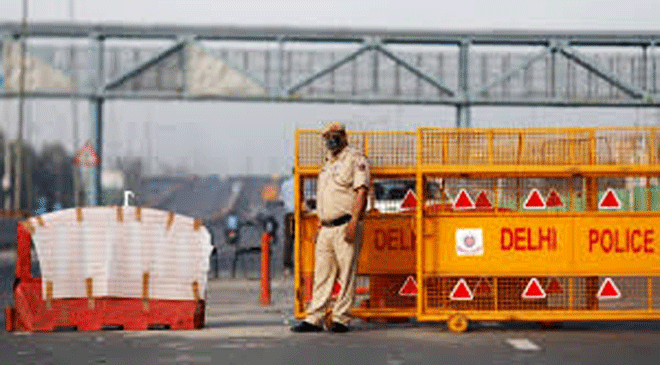Lockdown: The Good, the Bad and the Ugly
 lockdown
lockdownBY: Pradipta Deka & Nibir Deka
Indian Medical Association has confirmed Northeast’s (NE) first positive case of COVID-19 in Manipur. Amidst the outbreak of COVID-19 - Tripura, Arunachal Pradesh, Assam and Nagaland have been directed by Cabinet Secretary for a complete lockdown. The latest NE state is Sikkim, which will be placed under complete lockdown till 31 st of March. The Assam government has also taken up the decision to impose lockdown from March 24, 2020 at 6 PM till the midnight of March 31, 2020, as announced by State Finance Minister Himanta Biswa Sharma.
During the lockdown, grocery shops, pharmacist and petrol pumps will continue to open. Apart from these three essential service providers all kinds of shops, business, government offices in Kachari, Government and private educational institutions and Industries will be closed significantly. During lockdown all sorts of public transportations will be stopped. Transportation including hospitals, airport, helipad, railway stations and vehicles carrying essential food items will only be permitted. The Assam state administration has declared that anybody who found violating the lockdown guidelines will be punished to six months that can extend upto 2 years.
The lockdown is not limited to NE as it includes pan India with instructions from the top. Union Home Sectary Ajay Bhalla’s press conference with state DGPs, he asked for strict implementation of lockdown on 19 states and UT’s. Six states and UT have received lockdown in partial areas. A directive has been issued to the state government of Nagaland to witness complete lockdown. Earlier, Nagaland and Mizoram followed partial lockdown whereby sealing all transit borders as a precautionary measure. In Arunachal Pradesh, the Government has ordered lockdown from today at 5 PM till 31 st March. The cabinet secretary has written an official letter to state secretaries to appreciate the efforts of the state governments. A specific issue that has been highlighted in the letter is to monitor the situation by 24*7. In addition, timely decision to lock down certain areas can be taken if
necessary. The restrictions imposed should be strictly followed.
Why are they initiating lock down?
The lockdown is followed with the rise of corona cases along with reported deaths in India.
Comparing India to Italy and Iran where the Corona pandemic has been brutal -
Week 2 Week 3 Week 4
Italy 152 1034 6362
Iran 43 245 4747
India 24 425 ??
In the second week, India increased the rise to 24 cases, Iran increased to 43 cases and Italy to 152 cases. And in third week, cases in India have risen up to 425, Iran to 245 and Italy to 1034. And in the fourth week, Iran jumped its cases from 245 to 4747 and Italy to 6,362 and it is certain that India is in exponential stage to jump up the Coronavirus cases with the risk of its big population. Addressing the concerns, WHO Executive Director Dr. Michael J Ryan said, “India is a hugely populous country. The future of the pandemic will be determined on what happens in largely populated countries. India continues to take aggressive measures at public health level of the society to compress this disease and save lives”.
Worldwide lockdowns
China was the first country where maximum number of coronavirus cases was reported initially. Lockdown in Hubei province of China began on 23 rd of January, 2020 when death toll was at 17. Italy imposed lockdown on March 9, 2020 when death toll was at 463. Spain experienced lockdown on March 15 when death toll was at 288 and France experienced lockdown on March 16 when death toll was 148.
Lockdown Date Deaths
CHINA 23-Jan 17
ITALY 09-Mar 463
SPAIN 15-Mar 288
FRANCE 16-Mar 148
It is evident from the above that Italy and Spain especially kept it too late in their lockdown. This allowed transmission to reach Stage 3 – Community Transmission. To avoid this, lockdowns are necessary for India.
Why is lockdown necessary in India?
There are plenty of videos in social media where Janta Curfew was observed as a grand celebration rather than a mass awareness drill. The villagers were dancing to the tunes of khol and taal was alarming at a time when the WHO is asking is for maintaining social isolation. As, the number of COVID-19 cases have crossed 345,75 districts. A lockdown will reduce the congregation of citizens in public. This element is expected to lower down the rate of infection.
Will the lockdown be enough?
It is true that Indians lack the knowledge of social discipline. But, India possesses a population under poverty and other low income levels. It is not viable for these people to undergo social isolation as they are mostly constraint under a single room, especially in the slums. The very idea of isolation fostered by the lockdown seems alienating for the common masses. As of yet, there’s no vaccine to stop the viral spread. In this context, the alternative remains are of mass testing to isolate cases.
India with a population of 1.3 billion is under-tested. A media bulletin released by Health and Family Department Assam reveals 32,706 people have been screened in Airports and 128, 086 people screened in Railways, as March 23. The govt’s efforts in undergoing screening and quarantining people are lauded. However, the same report reveals that till date 88 samples were tested. Assam so far has no positive case for covid19. Is this a correct indicator of the situation in lieu of the testing that has been carried out?
Going forward
Health care departments should have focused on generating multiple testing kits rather than random screenings in airports and railway stations. Due to lack of infrastructure, India has missed the early train to stop the spread as most of the people have returned back to their home without a proper test.
For damage control, India should follow the example of South Korea which has successfully flattened the curve by undergoing testing along with providing proper medical support. The lockdown will facilitate this venture as the people under lockdown will be maintaining a status quo. To address the first step of testing, Pune based Mylab Discovery Solutions Pvt Ltd has developed India's first indigenous COVID19 testing kit that has been approved by the Indian Council of Medical Research (ICMR). A single kit costs Rs 80,000 & can test 100 patients. Much more needs to be done to cater the entire nation, but it’s a start. 118 govt laboratories have also been included in ICMR network of testing. The network has capacity to test 12000 samples a day. 22 private laboratory chains, with about 15,500 collection centres, have been registered with ICMR so far.
The second step of critical medical support is necessary and the Assam’s government’s plan to convert existing govt facilities into Covid centres as reiterated by HBS will be crucial in this aspect. A lot will depend on how much we increase our critical care support like ICU beds and ventilators in the coming days.
In the meantime, the number of mobile emergency vans has to be increased. There are remotest villages and towns where healthcare facilities are deprived of. In case of emergencies these mobile vans can counter the cases in a speedy manner. The 104 emergency call initiatives by the Assam govt will help in this aspect.
The Indian government continued export of domestically manufactured PPE, even after the WHO’s guidelines expecting a disruption in the supply of PPE as stated by the Caravan report. The government should ramp up production of maximum number of PPE (Personal Protection Equipment), N 95 masks and HazMat suits so that the first in line of the defence (the medical staff) remain protected.
Along with large scale testing in huge scale, the health care system in Germany is strong. Per 100,000 inhabitants, Germany has 823 hospital while Italy has 331 hospital beds. With 30150 cases, it has fewer deaths (130) as compared to other countries.
Compared to that, there are 7,13,986 total government hospital beds available in India, data from National Health Profile–2019. This amounts to 0.55 beds per 1000 population. The elderly population (aged 60 and above) is vulnerable, given more complications which are reported for patients in this age group against the corona virus.
Taking stock of the current situation, Union Cabinet Secretary Rajiv Gauba has written to Chief Secretaries of States, "All states should immediately identify and earmark hospitals dedicated for management of COVID19 cases to ensure they are fully ready in the event of a further spike in the number of confirmed cases". In the meantime, India's first dedicated COVID19 hospital in Mumbai has been set up by Reliance Industries. These are important measures in the regard for availability of the hospital services at the eleventh hour.
An existential lesson to comprehend
Since, we are all stuck inside our homes in a global pandemic situation. Instead of resorting to blame game and partisan politics about our current situation, the people of this country should take this time to contemplate about their priorities.
Support Inside Northeast (InsideNE), an independent media platform that focuses on Citizen-centric stories from Northeast India that are surprising, inspiring, cinematic and emotionally relevant.
Readers like you make Inside Northeast’s work possible.
To support our brand of fearless and investigative journalism, support us HERE.
Download:
The Inside Northeast app HERE for News, Views, and Reviews from Northeast India.
Do keep following us for news on-the-go. We deliver the Northeast.
Copyright©2025 Living Media India Limited. For reprint rights: Syndications Today









